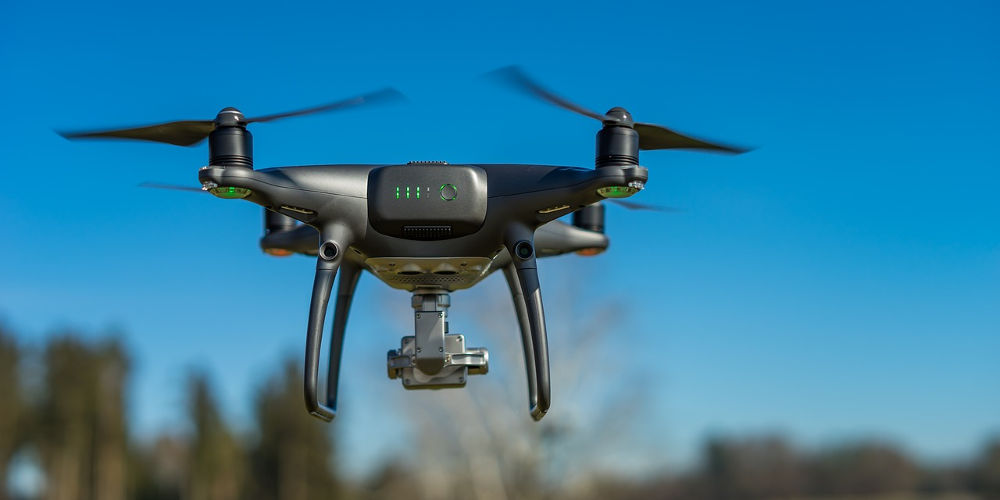Why Robotics for Security Is Here to Stay
From more informed alarm response to greater detection possibilities, make no mistake — security robotics is not a passing fad.

As a society we are changing almost daily. Political perspectives, advances in healthcare and changes in education structure are just a few of the rapidly changing areas.
Some would argue that one of the things that has changed our world the most is humanity’s continuous drive to create machines and systems to perform some of the repetitive or dangerous work that previously were the jobs of mere mortals.
Automotive manufacturers were among the first to embrace this shift by converting nearly all heavy lifting and production line tasks to be handled in part or in full by machines.
Putting aside any political aspects, this shift has allowed the car makers not only to get products completed faster and more cost effectively, but they are now able to render a more consistent and accurate product than ever before.
Make no mistake about it, the use of robotics is here to stay and the security industry is not going to be an exception. Business is booming thanks to security systems now filtering down to the previously untapped 75% of society.
With unemployment rates at unprecedented low levels, it is becoming more challenging to add human resources. As an industry we are going to need to rely on robotics to help us keep up with the workloads.
A significant accelerant to its adoption will be the prevalence of artificial intelligence (AI) to enable reliable ways humans can get rapid and real-time intelligent insights into what’s occurring on a site. This will be primarily accomplished through the deployment of drones and robotic machines.
Making the Case for Machines as First Responders
One of the biggest deterrents to theft in the traditional security market is the threat that law enforcement will be arriving in a relatively short amount of time to either mitigate the loss or arrest the perpetrators.
However, we all know that law enforcement resources are getting stretched to the point where this is not always possible. What if we could get an intelligent drone onsite consistently within a matter of minutes?
And what if the responding drone was equipped with advanced electronics including, high resolution video, thermal imaging, two-way audio, license plate readers and it was connected to a back-end that knew what vehicles were normally onsite, had facial recognition to identify “the friendlies” and had enough AI to know if something was out of place.
You can easily see the advantages of utilizing an intelligent drone for responses when you consider what normally happens when a guard or police officer arrives on a site. If a drone replaced the initial guard or police officer response, it could perform an initial assessment and assign a threat level indicating whether a human response is needed.
Dispatches would then be made based on valuable information gleaned ahead of time so responders could focus on the real problem. This would eliminate calls for emergency response where no crime was being committed and would also provide a safer environment for authorities when a response is required.
Alarm companies and central stations would either need to have their own drone force or they would contract for the service to a third party. It is also feasible that some police departments would want to adopt the technology and deploy their own drones. What is certain is that it would be faster, safer and more economical to have a drone fly out to a home alarm than to have a human perform the same task.
Fixed Facility Applications Benefit From Dedicated Drones
Another application for drones in the security space is reconnaissance-type patrols. Drones can be programmed to fly specific patterns and scan for things that are out of place, missing or are moving. That information can be relayed to humans who can more closely examine the situation.
The applications for this type of deployment are nearly endless, including large manufacturing facilities, campuses or open areas where other types of traditional detection is impractical or cost prohibitive to deploy. I envision drone patrols being used increasingly in fixed facility applications as well.
In these circumstances, a dedicated machine can be programmed to patrol areas looking for issues, such as in airports and heavily populated areas. We are already starting to see this today where machines are equipped with a multitude of sensors (e.g., bomb, radiation, chemical detection, etc.), cameras, two-way audio and most also have some sort of visual display that can interact with humans.
Behind all of these technologies and machines will be humans that will be interacting and analyzing data with the help of solid AI. The result will be the ability to detect and report threats to first responders much faster and more accurately than ever before.
Deployment of robotics in security will mean great things for the industry and will require new types of employees and education. The opportunities will be endless for those that choose to adapt to and learn the new technologies. Those that refuse to change, however, will certainly be left behind.
If you enjoyed this article and want to receive more valuable industry content like this, click here to sign up for our FREE digital newsletters!

Security Is Our Business, Too
For professionals who recommend, buy and install all types of electronic security equipment, a free subscription to Commercial Integrator + Security Sales & Integration is like having a consultant on call. You’ll find an ideal balance of technology and business coverage, with installation tips and techniques for products and updates on how to add to your bottom line.
A FREE subscription to the top resource for security and integration industry will prove to be invaluable.








